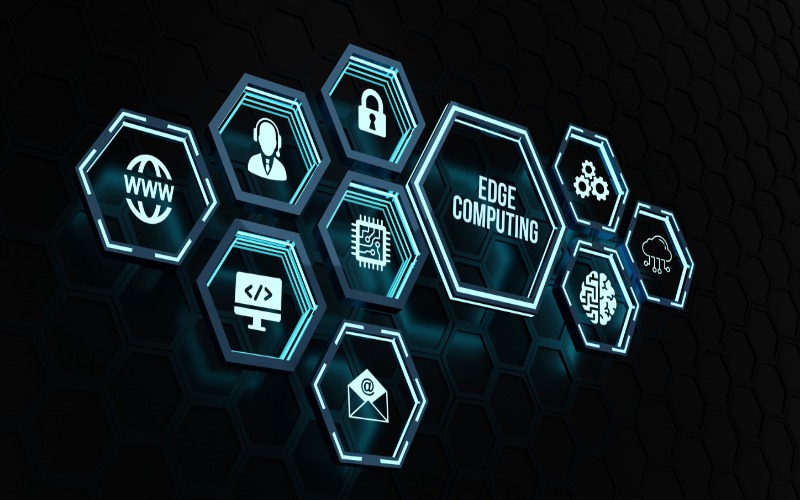Convenience and ease are the cornerstones of cloud computing, which is why so many businesses rely on these services. Cloud computing also makes data theft significantly more convenient and easy, as hackers now have access to the data stored on hundreds of millions of customers — right from their computers. The use of cloud computing by organizations is leading to an increase in data theft incidents, putting the privacy and security of customers, employees, and the organization itself at risk — at great cost to businesses. While there is no one-size-fits-all solution for businesses, end-to-end encryption and reliance on edge computing stand out as the best line of defense.
Data Security Risks Inherent in Cloud Computing
Cloud computing—in which information is processed and stored online rather than on a local computer—has been around for decades. But it wasn’t until Amazon Web Services (AWS) launched its cloud service nearly two decades ago that the idea gained traction as a commercial solution. Today, more than half of all enterprise data is stored in the cloud—a figure that is expected to reach nearly 70% by 2026, according to a recent study by Thales.

While cloud adoption is common and supports business operations around the world, it has a dark side: data theft. According to Thales, 47 percent of data in the cloud is sensitive, making it a prime target for cybercriminals. Before the cloud, thieves had to gain access to the physical location where data was stored. Today, hackers can remotely access the personal data of hundreds of millions of individuals, often operating from jurisdictions that are outside the legal realm and, in many cases, openly hostile.
This availability has led to a significant increase in data thefts in recent years. According to Forbes, there was a 72 percent increase in data breaches worldwide between 2021 and 2023. Globally, a single data breach can cost nearly $5 million. However, in the United States, the cost is nearly double that.
It’s a cost that organizations are increasingly dealing with. One of the most notorious breaches occurred in 2017, when the data of nearly 150 million Equifax customers was compromised in a hack. The company spent more than $1 billion in affected users, legal fees, and upgrading its data security and technology. Two years later, Capital One was fined $80 million after the data of 100 million of its customers was compromised. In May 2024, 560 million Ticketmaster customers fell victim to a group of data hackers who gained access to the company’s cloud storage system.
Organizations understand the importance of cloud security. Thales has found that security investments are a top priority for business leaders. However, hackers can always find new vulnerabilities in cloud computing. Given the widespread use of cloud computing, if thieves can’t break into one company’s cloud infrastructure, they’ll move on.
How Edge Computing Can Mitigate Cloud Computing Risks
To enhance cybersecurity, some organizations turn to encryption, which creates a unique key that only the user knows. It’s a method that can prevent data that is being processed and at rest from being read by thieves. For example, Apple’s end-to-end encryption protects data like iCloud messages and voice memos for iPhone users.
Demand for this type of solution is on the rise. A study published in Fortune Business Insights found that the cloud encryption market was worth $3.18 billion last year and is expected to rise to $34.63 billion by 2032.
While encryption can add a layer of defense to provide lasting protection, it is critical that organizations encrypt 100% of their data. Edge computing is the solution for businesses seeking advanced cybersecurity. This approach processes and stores data close to local devices, rather than in a shared cloud, and offers three key benefits:
Security. Edge computing keeps data closer to its source through a decentralized approach that provides inherently stronger security backed by encryption. Privacy. As cybersecurity challenges become more prevalent, consumers are increasingly concerned about the privacy of their data. For example, security camera company Eufy stores customer video data locally, which is decrypted on the end user’s device only on demand, unlike competitors that store all video in the cloud and have full access to unencrypted video footage. Speed. When data is processed closer to the source, it reduces bandwidth, allowing applications to run faster and more efficiently. Data processed on the edge device also reduces latency because processing is done directly on the device rather than requiring an additional hop to frequently overloaded web servers. Many edge computing solutions also store a local copy on the edge client, with the added benefit of offline access and greater resilience in the face of cloud infrastructure outages.
Why Edge Computing is the Future
The emergence of AI and large language models is paving the way for edge computing to become more accessible to businesses. Large language models can simplify the code needed to build edge computing solutions from thousands of lines to just one line. This reduced code base will be easier to deploy and manage at the edge. This will lead to a proliferation of the edge computing market and an increase in the number of organizations relying on edge computing. At the same time, with cyberattacks and economic uncertainty being major concerns for CFOs, organizations will feel the urgency to shift to a more feasible and stable security model. Cyber liability insurance is becoming more expensive. Soon, as edge computing adoption increases, hackers will focus their attacks on companies that do not use edge computing. This increased risk could make insurance more expensive for those who do not migrate to edge computing.
According to a recent study by the International Data Corporation, global investment in edge computing is expected to jump 15% annually by the end of 2024 to $232 billion. The organization says that number could reach $350 billion in just three years.
IDC’s research vice president Dave McCarthy has accurately predicted that edge computing “will play a pivotal role in the deployment of AI applications.” It’s a trend that’s already underway. For example, tech giant Apple recently launched its Apple Intelligence platform, which leverages AI and edge computing.
Embrace the transformation today.
While cloud computing has become commonplace, the vulnerabilities it exposes organizations to can have lasting effects. Given today’s economic uncertainty, this is a risk that businesses can’t afford to take. Edge computing is the answer—and one that leading companies are already embracing. Now is the time for businesses to assess their security risks, consider how edge computing can help bridge these gaps, and create a long-term strategy for protecting their data and businesses.



